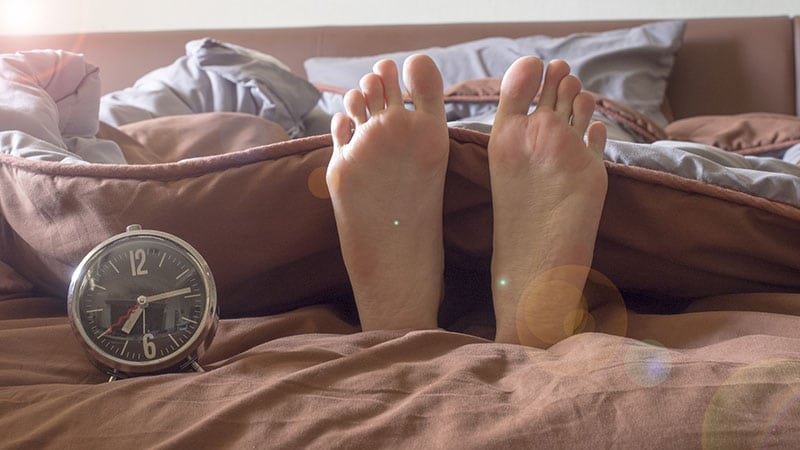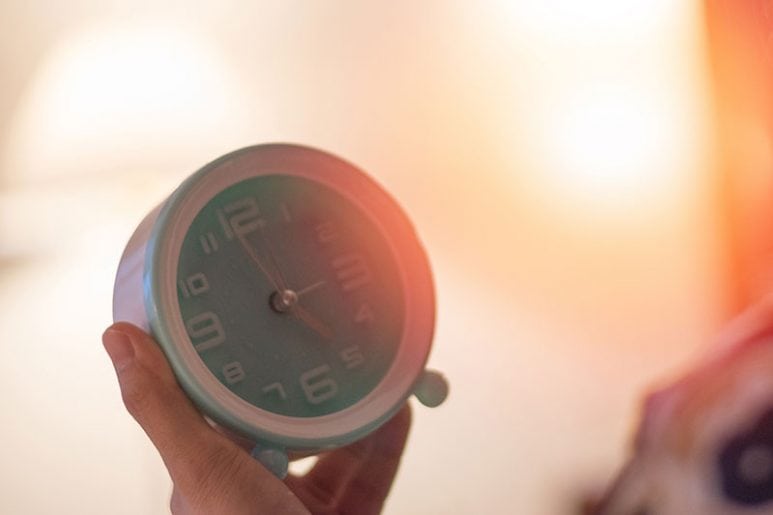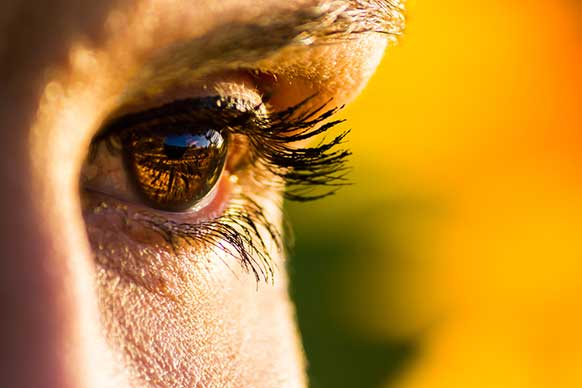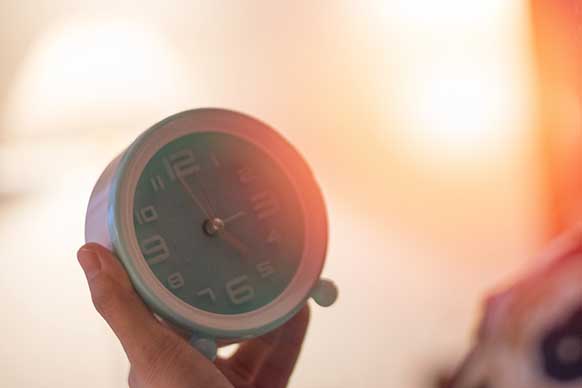Seasonal affective disorder (SAD) is a type of depression that comes and goes with the seasons. The most typical pattern for SAD is that symptoms start in the late fall or early winter and go away with the arrival of spring. It is also possible for someone to experience seasonal affective disorder in a summer pattern, though this is quite rare.
In previous decades, seasonal affective disorder was considered a completely separate condition than major depressive disorder. However, professionals now consider it to simply be a subset of major depressive disorder, with a seasonal aspect attached.
In order to be diagnosed with SAD, you have to meet the full criteria for clinical depression, you must only experience the depression during a particular season and it must occur for a minimum of two years. If you are experiencing several of the following symptoms, you may meet the diagnostic criteria for a major depressive episode:
- anxiety
- changes in appetite or weight
- difficulty concentrating
- feeling hopeless
- feeling sad
- feeling worthless
- feelings of guilt
- irritability
- lack of energy
- lethargy or sluggishness
- losing interest in activities you once enjoyed
- sleep disturbances
- thoughts of death or suicide
- symptoms must be present across most days and situations
There are certain risk factors for seasonal affective disorder. Women are four times as likely to be diagnosed with seasonal affective disorder. Those who live far from the equator—whether far north or far south—are many times more likely to suffer from this condition. For example, whereas only 1 percent of Florida residents experience seasonal affective disorder, 9 percent of Alaska residents do. Seasonal affective disorder is most commonly diagnosed in adolescents and young adults, which may indicate that younger age is a risk factor, though it may also be that older adults are less likely to seek out diagnosis and help for this disorder. Lastly, a family history of seasonal affective disorder, major depression and possibly other psychiatric illnesses may raise your risk of developing seasonal affective disorder yourself.
Why Does SAD Occur?
 There are several factors that contribute to depression in the darker months of the year (the causes of summertime depression are much less understood). Serotonin is a neurotransmitter highly responsible for maintaining a normal mood; production of this chemical is partly triggered by sunlight exposure. Since there is much less sunlight during the fall and winter, serotonin levels can plummet. Less sunlight also means less vitamin D production; a lack of this nutrient has been highly linked to depression and mood.
There are several factors that contribute to depression in the darker months of the year (the causes of summertime depression are much less understood). Serotonin is a neurotransmitter highly responsible for maintaining a normal mood; production of this chemical is partly triggered by sunlight exposure. Since there is much less sunlight during the fall and winter, serotonin levels can plummet. Less sunlight also means less vitamin D production; a lack of this nutrient has been highly linked to depression and mood.
Melatonin is another neurotransmitter—its presence promotes mental and physical sleepiness, which is important for falling asleep at night. Melatonin begins to be secreted once the sun goes down; its release is triggered by darkness. When the world around you is dark all the time, melatonin may be released at inappropriate times, leading to lethargy and lack of concentration, which are integral symptoms of depression for many people.
In the fall and winter, the generalized darkness of the outside world can have a negative effect on brain chemistry, causing depression. The cold and gloomy weather can also drive many people to stay inside. Though it may feel cozy to stay at home in the winter, the downside of this is that it could lead to social isolation. Social isolation may be a contributing factor for wintertime depression for some sufferers.
How Can SAD Be Treated?
There are many possible angles to take when it comes to treating seasonal depression. The mainstays of treatment are medication to help re-balance brain chemistry, and specialized psychotherapy for seasonal depression. Therapy is great for helping the patient learn to identify and change negative thoughts and behaviors that perpetuate depression, learn healthy ways to cope with depression and learn how to manage stress.
The principal aspect of treating seasonal affective disorder, that isn’t used to treat conventional depression, is light therapy. The purpose of light therapy is to mimic natural outdoor light to replace the sunlight lost during winter. This treatment has been used for seasonal depression since the 1980s. Traditional light therapy consists of sitting in front of a specially-made bright light for 20 to 60 minutes, usually within the first hour of waking up in the morning.
A common complaint of people who use light therapy is that they do not always have time to sit in front of the light every single morning. To make light therapy more flexible and convenient, a number of companies have developed special light-emitting glasses. With these special glasses, the wearer can continue to carry out everyday tasks while receiving therapeutical doses of light that does not affect the quality of vision.
In addition to these treatments, another great addition to a seasonal depression treatment plan is taking a supplement that contains vitamin D, which has been shown in research to help relieve depressive symptoms. Lastly, an important habit for sufferers of any type of depression to develop is exercise. Research shows that regular exercise can be as effective as medication or psychotherapy. Even just 30 minutes of aerobic exercise three times a week can make a big difference. Exercise relieves depression because it releases endorphins, regulates the circadian rhythm, reduces stress, increases light exposure if done outside and can help improve self-esteem.
 All living creatures have
All living creatures have  While we now understand more about the circadian rhythm than we ever have, modern life makes maintaining a stable internal clock a greater challenge than ever before. People are working increasingly erratic hours due to a planet where the business day never stops. Many people work odd shifts that keep them from waking and going to bed at a regular time. Travel for work and personal reasons has made jet lag a common affliction. Even simple things like daylight savings time can throw internal clocks off kilter.
While we now understand more about the circadian rhythm than we ever have, modern life makes maintaining a stable internal clock a greater challenge than ever before. People are working increasingly erratic hours due to a planet where the business day never stops. Many people work odd shifts that keep them from waking and going to bed at a regular time. Travel for work and personal reasons has made jet lag a common affliction. Even simple things like daylight savings time can throw internal clocks off kilter. Melatonin is a hormone produced by the pineal gland in the brain. While there are small amounts of melatonin found in some foods like vegetables and meat, it’s most commonly used in supplement form.
Melatonin is a hormone produced by the pineal gland in the brain. While there are small amounts of melatonin found in some foods like vegetables and meat, it’s most commonly used in supplement form. Combining sedatives may result in excessive drowsiness or loss of consciousness, but some people experience the opposite effect. Some people feel like they have taken a stimulant when alcohol is combined with melatonin. This may be due to the body reacting to alcohol by producing adrenaline.
Combining sedatives may result in excessive drowsiness or loss of consciousness, but some people experience the opposite effect. Some people feel like they have taken a stimulant when alcohol is combined with melatonin. This may be due to the body reacting to alcohol by producing adrenaline. When astronomer Jacques d’Ortous de Mairan studied mimosa plants in the 18th century, he discovered the plant’s leaves open toward the sun during the day and close at dusk, thus discovering plants have their own biological clock. This led to findings that humans and animals also have a biological clock and daily physiology fluctuations. This daily adaption is dubbed the circadian rhythm.
When astronomer Jacques d’Ortous de Mairan studied mimosa plants in the 18th century, he discovered the plant’s leaves open toward the sun during the day and close at dusk, thus discovering plants have their own biological clock. This led to findings that humans and animals also have a biological clock and daily physiology fluctuations. This daily adaption is dubbed the circadian rhythm. When it comes to vitamins and sleep, vitamin A appears to affect the circadian rhythm in a different but just as crucial way. Vitamin A is very important to maintaining good vision. This includes differentiating light from dark. As mentioned before, your eyes’ perception of light is crucial to maintaining appropriate melatonin cycles and thus a healthy sleep-wake cycle. Without the ability to perceive light, your brain may release melatonin throughout the day, making you sleepy and fatigued. It ends up that the cells in your eyes that are responsible for perceiving light levels are especially dependent on vitamin A.
When it comes to vitamins and sleep, vitamin A appears to affect the circadian rhythm in a different but just as crucial way. Vitamin A is very important to maintaining good vision. This includes differentiating light from dark. As mentioned before, your eyes’ perception of light is crucial to maintaining appropriate melatonin cycles and thus a healthy sleep-wake cycle. Without the ability to perceive light, your brain may release melatonin throughout the day, making you sleepy and fatigued. It ends up that the cells in your eyes that are responsible for perceiving light levels are especially dependent on vitamin A. If you are interested in sleeping better—and who isn’t?—getting enough vitamins may be an easy first step. Many people in the West have lower than optimal levels of nutrients, in part due to depleted soil. However, there are many supplements and multivitamins on the market that can help you to get enough of all of the nutrients you need. While it is important to eat a varied diet and to get as many vitamins as possible from your food, many people cannot get enough vitamins without taking a multivitamin. In addition, getting enough sunlight is important to metabolizing vitamin D, as well as to maintaining healthy melatonin levels. If you wear sunscreen and avoid direct sunlight to prevent skin cancer, an additional supplement of vitamin D may be necessary.
If you are interested in sleeping better—and who isn’t?—getting enough vitamins may be an easy first step. Many people in the West have lower than optimal levels of nutrients, in part due to depleted soil. However, there are many supplements and multivitamins on the market that can help you to get enough of all of the nutrients you need. While it is important to eat a varied diet and to get as many vitamins as possible from your food, many people cannot get enough vitamins without taking a multivitamin. In addition, getting enough sunlight is important to metabolizing vitamin D, as well as to maintaining healthy melatonin levels. If you wear sunscreen and avoid direct sunlight to prevent skin cancer, an additional supplement of vitamin D may be necessary. Whether you have type 2 diabetes or are in perfect health, maintaining stable blood glucose will help you to feel better and actually be healthier. There are
Whether you have type 2 diabetes or are in perfect health, maintaining stable blood glucose will help you to feel better and actually be healthier. There are